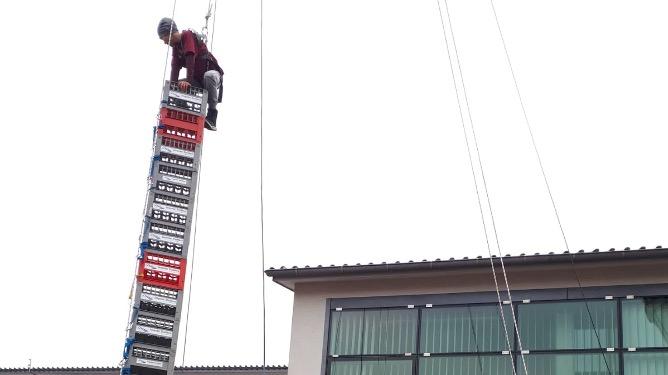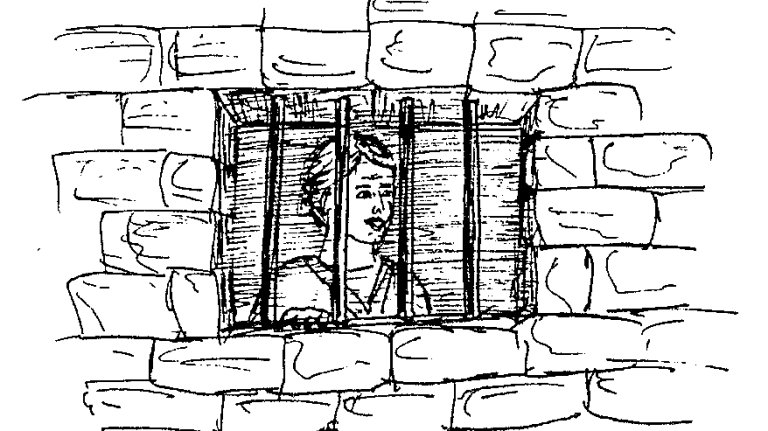Implementation
We have tested and refined our Harassenstapeln over the last few years. We would like to say in advance that if you are planning a Harassenstapeln. You need to think carefully about it. How the safety of participants, supervisors and spectators can be guaranteed. Our instructions are not generally valid.
A crane is used to secure the participants and the boats and sets the maximum tower height. The pulley for the safety rope is attached to the crane hook, the other two ropes should be about 50 cm away from it in the final position, as the participant is secured at the back and cannot act smartly otherwise.
The participant is secured with a static rope, via the crane hook (sling and pulley) back down through a ladder. Similar to abseiling to a fixed point, e.g. a crane support. We use a belay device (Grigri). The rope must be pulled tight, especially at the beginning, because even a static rope will give way in the event of a fall, especially with heavier people.
Another rope (static) is fixed from the ground to the crane. This rope is used by the participant to secure all of the harnesses before they are installed. This is done using a webbing sling with a carabiner on each ace. This rope needs a fixed point on the ground (e.g. hook in the ground) and is attached to another fixed point (e.g. crane supports) via a pulley at the bottom. (The degree of difficulty of the stack can be varied with the tension of this rope. More tension = easy, less tension = more difficult). This rope must be absolutely perpendicular to the base plate so that stacking is possible.
A third rope (giant loop/static) is used to hook in the harasses at the bottom and pull them up to the participant. The harnesses should be pulled up by an additional hook and not by the carabiner. So that they can be hooked onto the rope first and are never without a safety catch.
To ensure the safety of spectators, the area should be generously cordoned off and only the appropriately attentive leaders who are handing out the karabiners are in this area.
Now it's a question of which participant can stack up the most harasses. We have found it useful to put the climbing harnesses on in such a way that they are secured at the back. It is recommended to have around 50 harnesses if a correspondingly high crane is available.
A bell that can be rung can be attached at the top.
If the tower falls over, all of the harasses are around the rope and are unhooked and put away. The participant is slowly lowered by the safety device and, if necessary, pulled to the side using the harasses.
Material
- Crane
- Beverage harasses (which may break)
- Carabiners and slings (for each harass)
- 3 static ropes long enough for your height (double length)
- Climbing harness (full body)
- 3 pulleys with slings and carabiners for on the crane,
- Webbing sling, belay device (e.g. Grigri) and gloves to belay below
- Barrier tape and posts
- Fixed point at the bottom
- Base plate (which can be leveled with wedges or similar)
- Spirit level
- Bell
- Possibly rubber plates to protect the harass
Checkliste der SUVA für Harassenklettern
Von der SUVA gibt es eine Dokument "Personentransporte mit Arbeitsmitteln in Freizeit Harassenklettern". In dieser Checkliste werden alle Sicherheitsrelevanten Punkte aufgeführt und können der Reihe nach überprüft werden.
Sources
Picture and text: Steckborn youth group
Content may be automatically translated. Help improve the quality of the translation with your editing!




